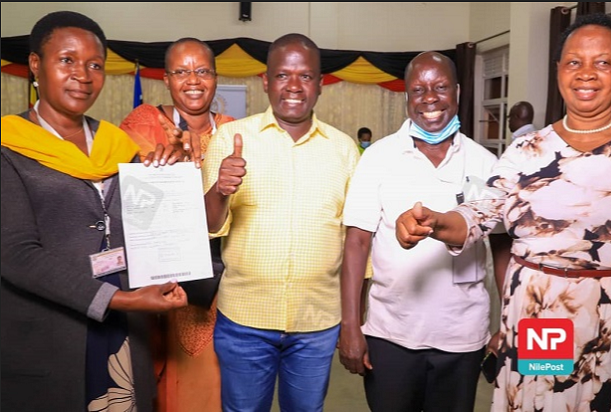Government wants to protect local textile industry
Government through the Ministry of Finance, Planning and Economic Development has clarified on the proposed taxes on imported textile fabrics and garments.
Finance Minister, Matia Kasaija’s clarification in a letter dated September 7, 2021 to the Uganda Revenue Authority (URA) Commissioner General (CG), John Musinguzi reveals that the ministry and representatives of tailors and traders on August 31, 2021 held a meeting to discuss concerns regarding the taxation of textile fabrics and garments, following several petitions from the business community.
The meeting according to Kasaija was also attended by the Minister of Trade, Industry and Cooperatives, officials from URA, National Planning Authority (NPA), and representatives of NYTIL and Fine Spinners (U) Ltd.
During the meeting, Kasaija said participants were updated on the actions taken by Finance Ministry to address the concerns raised by the business community regarding the taxation of textile fabrics and garments.
In the meeting, URA confirmed that following the guidance issued in a letter dated August 4, 2021 that the tariff structure was adjusted to the effect that out of a total of 572 products (tariff lines), 525 products (tariff lines), representing 91% of all categories of imported textile fabric and garments, would benefit from a stay of application of the specific duty rate and would therefore attract 35% import duty. On the other hand, 47 textile products (tariff lines), representing less than 10% of all categories of textile fabric and garment imports, fall in the category of products that are locally produced and thus warrant protection. Accordingly, Kasaija says that the 47 products (tariff lines) were to attract a duty rate of 35% or USD 3.0/kg (whichever is higher) for textile fabrics and 35% or USD 3.5/kg whichever is higher for garments.
However, according to Kasaija, following the outcome of the meeting, he reconsidered the taxman’s position with regard to the 47 textile products (tariffs lines) to which the specific rate is still being applied, in line with his August 4, 2021 letter.
Following the reconsideration, Kasaija now says “For the 47 textile products (tariff lines) that fall in the category of products that are locally produced and thus warrant protection, we are providing a window of up December 31, 2021 during which URA shall stay the application of the specific (per KG) rate and only apply the advalorem rate of 35% to clear the goods that fall under this category (the 47 tariff lines). This is aimed at enabling importers to clear all goods that are currently under shipment or in customs and also providing the traders reasonable time to adjust their business decisions appropriately.”
He adds that in December 2021, his Ministry shall convene another meeting with the relevant stakeholders to review the decision above and accordingly agree on the tax regime that shall apply to that category of textile fabrics and garments (the 47 tariff lines) after December 31, 2021.
The Minister says the other textile fabrics and garments (525 products/tariff lines), which are not locally produced and cannot be adequately sourced locally shall continue to benefit from the stay of application of the specific duty and would therefore attract 35% import duty as per the guidance in his letter of August 4, 2021.
“The purpose of this letter is therefore to request you to implement the above recommendations with immediate effect. Also, please advise all stakeholders on the list of products that fall in the two categories specified above,” Kasaija guided.





